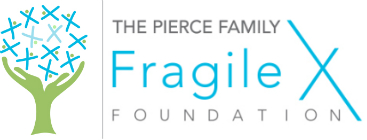Fragile X Syndrome
Fragile X Syndrome (FXS) is a genetic disorder that causes intellectual disability, behavioral and learning challenges and various physical characteristics. It is the most common inherited cause of intellectual disabilities and autism.
It is caused by the mutation of a single gene in the DNA. When this mutation occurs a protein crucial for neurological development and brain is not produced.
Currently there is no cure for this genetic disorder.
Quick FACTS
- There are 100,000 people in the United States living with this genetic disorder
- 1 in every 259 woman are a carrier of the Fragile X gene
- Fragile X Syndrome occurs in 1 in 4,000 boys and 1 in 6,000 girls worldwide.
- FXS can occur in both males and females, however, males are more frequently affected than females, and generally with greater severity.
Features of Fragile X Syndrome in Males
- The majority of males with fragile X syndrome demonstrate significant intellectual disability. Disabilities in FXS include a range from moderate learning disabilities to more severe intellectual disabilities.
- Physical features may include large ears, long face, and soft skin. Connective tissue problems may include ear infections, flat feet, high arched palate, double-jointed fingers and hyper-flexible joints.
- Behavioral characteristics can include ADD, ADHD, autism and autistic behaviors, social anxiety, hand-biting and/or flapping, poor eye contact, sensory disorders and increased risk for aggression.
- No one individual will have all the features of FXS, and some features, such as a long face and macroorchidism, are more common after puberty.
Features of Fragile X Syndrome in Females
- The characteristics seen in males can also be seen in females, though females often have milder intellectual disability and a milder presentation of the syndrome’s behavioral and physical features.
- About one-third of females with FXS have a significant intellectual disability.
- Others may have moderate or mild learning disabilities, emotional/mental health issues, general anxiety and/or social anxiety.
The fragile x Gene
The FMR1 gene is located on the long arm of the X chromosome. At the start of this gene lies a region of DNA which varies in length from one person to another. Ordinarily, this stretch of DNA falls within a range of length that would be considered "normal". In some people, however, this stretch of DNA is somewhat longer; this gene change is a premutation. Although a person who carries the premutation does not typically have symptoms of Fragile X, the stretch of DNA is prone to further expansion when it is passed from a woman to her children.
When the stretch of DNA expands beyond a certain length, the gene is switched off and does not produce the protein that it is normally makes. This gene change is called a full mutation. A male who inherits a full mutation exhibits Fragile X syndrome because his only X chromosome contains the mutated gene. A female may not be as severely affected because each cell of her body needs to use only one of its two X chromosomes and randomly inactivates the other.
Fragile X SYNDROME is Inherited
Each child of a carrier woman has a 50% chance of inheriting the mutated gene. A mother who is a carrier of Fragile X has a 50% chance of passing the mutated gene on to each of her children. Those children can in turn also be carriers or they might be fully affected with Fragile X syndrome.
Carrier men will pass the premutation to all their daughters but none of their sons. These daughters are carriers but they do not have Fragile X syndrome. The Fragile X premutation can be passed silently down through generations in a family before a child is born with the syndrome.
Carriers
Carriers have a small mutation in FMR1 (a premutation). Carriers do not show symptoms of Fragile X syndrome, but they may be at risk for related disorders such as Fragile X-associated Tremor/Ataxia Syndrome (FXTAS) and Primary Ovarian Insufficiency.
MOVING FORWARD
While individuals with Fragile X Syndrome will experience a number of challenges in their lives, given effective interventions and support they can be engaging and productive members of their families, schools, workplaces and communities.

